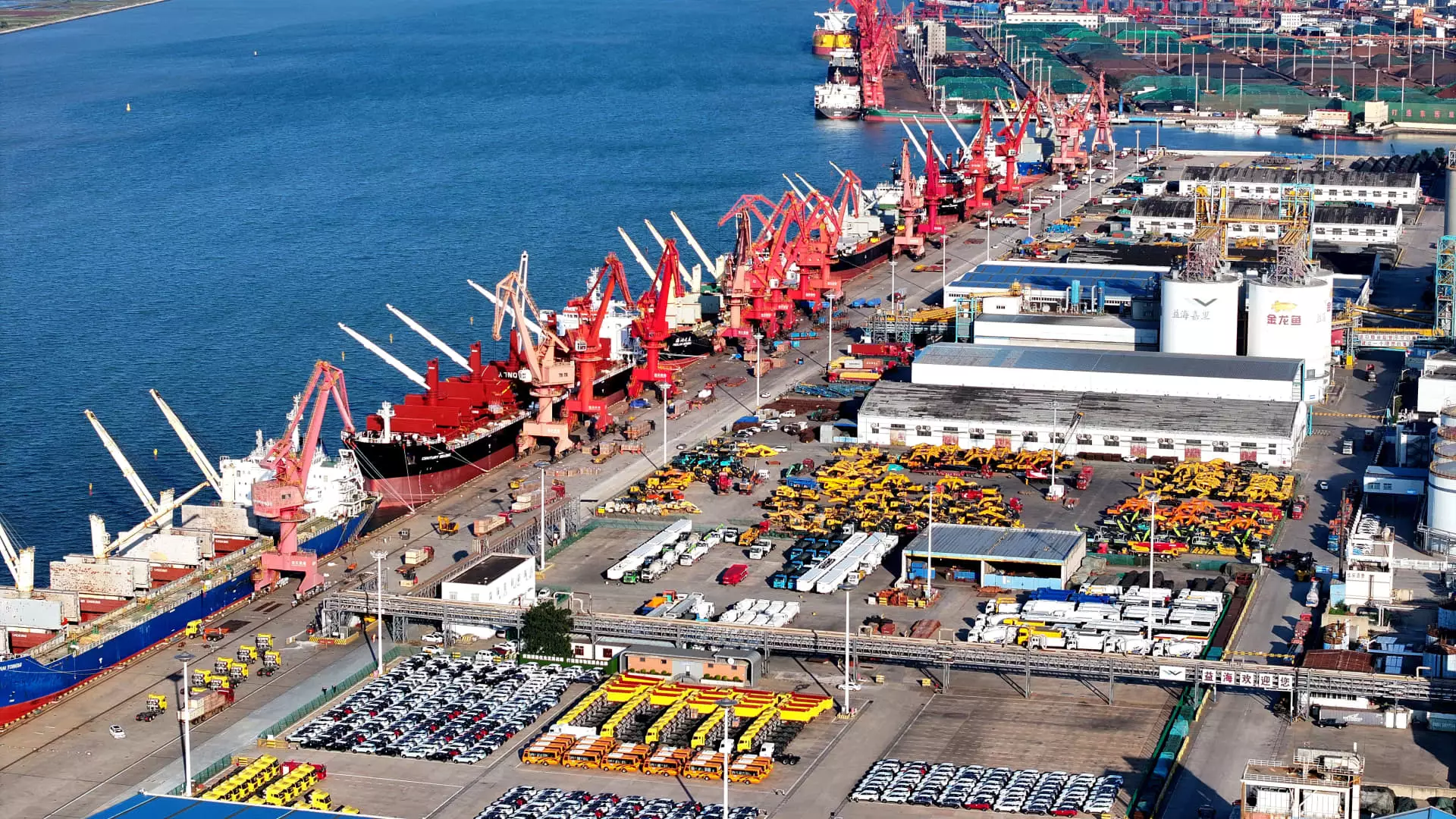The landscape of China’s industrial sector presents a complex tapestry woven from threads of fluctuating profits, stimulus measures, and the broader economic climate. Recent figures reveal a concerning trend: in October, industrial profits suffered a notable decline of 10% compared to the previous year’s figures. This marks the third consecutive month of diminishing profits, following an alarming 27.1% drop in September—the steepest reduction observed since March 2020. Such statistics not only underscore the existing struggles faced by Chinese industries but also raise pertinent questions about the effectiveness of the government’s stimulus initiatives.
Industrial profits serve as a crucial indicator of the economic vitality within China’s factories, mines, and utilities. The National Bureau of Statistics disclosed that during the initial ten months of the year, profits within this sector contracted by 4.3%. This drop is a slight deterioration compared to a 3.5% decrease reported through September, raising concerns over the consistency and resilience of economic recovery in the nation. The statistics bureau indicated some improvement in October, attributing it to the recent implementation of various stimulus measures. However, this assertion must be contextualized within the bigger picture of persistent economic challenges.
The analysis done by Yu Weining, a statistician with the NBS, identified improved profitability across many industries, particularly highlighting gains in the equipment and high-tech manufacturing sectors. While these advancements inject a modicum of optimism, it is essential to recognize them as outliers amid a predominantly declining trend. Eugene Hsiao from Macquarie Capital notes that this gradual improvement in profits is largely tied to one-time demand factors, illustrating a chaotic snapshot of the market where some sectors are thriving while others languish.
State-owned enterprises recorded a stark 8.2% dip in earnings from January to October, contrasting sharply with a lesser drop of 1.3% observed in private enterprises. Interestingly, foreign industrial firms, encompassing investments from regions such as Hong Kong, Macao, and Taiwan, reported a slight profit increase of 0.9%. This divergence hints at varying operational efficiencies and challenges across ownership structures, indicating deeper issues within the state-controlled sectors that could stifle recovery efforts.
While certain sectors exhibit resilience, the overarching economic environment is characterized by persistent deflation. The consumer price index (CPI) rose a muted 0.3% in October, marking the lowest increase since June. Simultaneously, the producer price index (PPI) fell by 2.9%, signaling an intensifying deflationary spiral that can inhibit corporate profitability and consumer spending. Such indicators raise alarms about the potential long-term stagnation of the Chinese economy, even amidst government efforts to drive growth.
Investment dynamics present another area of concern. The real estate sector, a critical pillar of China’s economic machinery, saw a troubling 10.3% decline in fixed asset investments through October. This marks a broader trend of waning confidence in property markets which are still reeling from earlier regulatory crackdowns.
Despite the challenges, there are glimpses of positive activity within the economy. Retail sales in October exceeded expectations with a 4.8% year-on-year growth, and the unemployment rate showed a slight improvement, decreasing to 5% from 5.1% in September. These figures illustrate that while significant hurdles remain, the potential for recovery exists in certain consumer-driven sectors.
As China’s economic engines continue to grapple with both external and internal pressures, a cautious outlook seems prudent. The government’s ambition to achieve a growth target of “around 5%” by implementing further fiscal support suggests an acknowledgment of current weaknesses. The upcoming release of the official manufacturing purchasing managers’ index (PMI) for November will serve as a critical gauge for market expectations and sentiment, with a projected reading of 50.3 indicating slight activity growth.
While there are indications of stabilization in some areas, the overall scenario is fraught with increasing challenges. A focused, multi-faceted approach—including continued investment in high-growth sectors and targeted assistance for struggling industries—will be fundamental in navigating the persistently turbulent economic waters heading into 2024. The resilience of China’s industrial sector will ultimately depend on these measures and the ability to adapt to a global economic landscape increasingly affected by uncertainties.

Leave a Reply